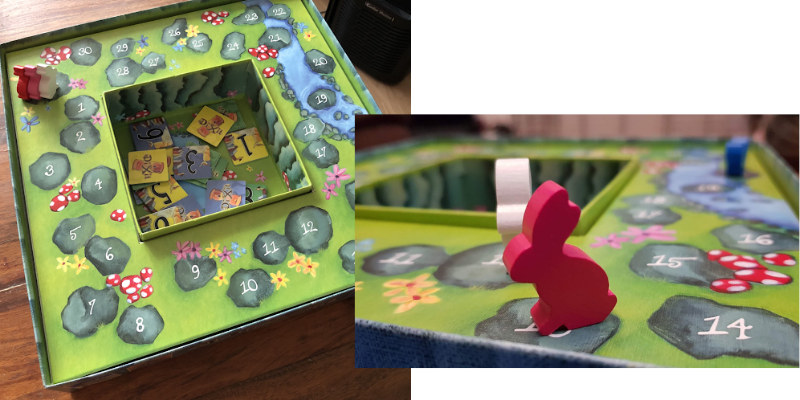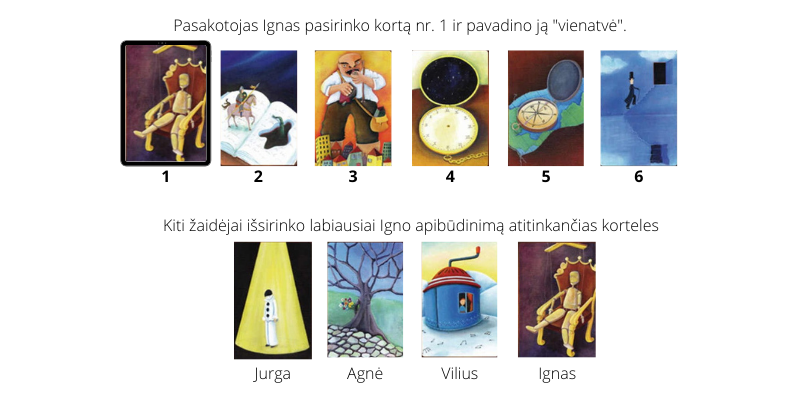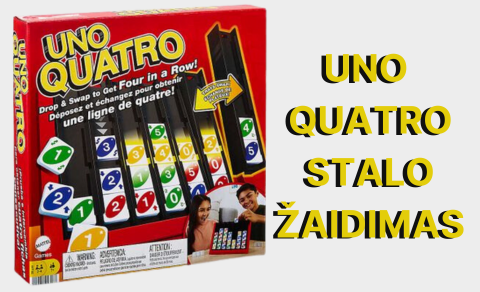Dixit is classified as card games category. It uses a deck of cards illustrated with dreamy images. The images are truly spectacular, evoking all kinds of feelings or associations. The game was first launched in 2008. The key to playing Dixit is to describe your card in such a way that only some of the players can guess which card is the narrator. It will be hard, but it only makes it more fun!

Other modern card games
Do you like playing cards? If you liked Dixit, you'll probably like other games that require cards.
UNO - Almost everyone has probably heard the word UNO. It is one of the first classic card games. What makes it special? Well, it's because even children can easily understand the rules. And there's plenty for adults to do when the excitement takes hold. The rules are very similar to those of classic card games, but with the addition of action cards.
Beaver gang - This is another easy card game. This game will help you develop your memory, as it is very useful to be able to remember where the cards are that you should not draw. In this game, unlike others, you have to try to draw the cards with the smallest possible values. This is because at the end of the game, the person with the fewest points wins.
Preparing for Dixit
The game set includes:
- A scoring board drawn on a box;
- 84 cards;
- 36 voting cards in six different colours, numbered from 1 to 6;
- 6 wooden hares.
Frequently asked questions
❓ How many people can play Dixit?
According to the Dixit rules, you can play from 3 to 6 people.
❓ How old can I play Dixit?
Dixit is for players from 8 years age.
❓ How long does it take to play one game of Dixit?
Duration per Dixit game: 30 minutes.
Dixit rules
Each player chooses a hare of the desired colour and places it on the initial scoring area. We then shuffle the 84 pictures and give 6 cards to each player. We leave the other cards face down within easy reach of all players. We give out voting cards to the players. We give as many cards as there are players. For example, if there are four players, we give out four cards (numbers 1 to 4).
The role of the narrator
The narrator is an important character in Dixit. He chooses any card he wants from the six he has and comes up with a sentence, a combination of words or even a simple sound to describe it. Anything that describes the content of that card is a dictum. The description must be thought of in such a way that at least one player will recognise the card later, but not all.
Choose the card that matches the narrator's description
Each player looks at the cards they have and chooses the one that most closely matches the narrator's choice of description. They then pass those cards to the storyteller in a way that prevents others from seeing the drawings. The storyteller shuffles all the cards (including their own) and arranges them in random order. The card on the left is the first card, the one next to it is the second, and so on.
Vote on which card is the storyteller's
The objective is to guess which card the narrator has chosen. Each player votes on which card they think is the narrator's card. Once the correct choice has been made, all players place their voting cards face down in front of them. No one may vote for their own card. Finally, the voting cards are turned over and the specific numbers are placed next to the cards for which they voted. (1s are placed next to the first card, 3s next to the third). This makes it easier to count the points.

Scoring
- When all players guess the storyteller's card or none of them guesses it, the storyteller gets no points and everyone else gets 2 points;
- If the card is not guessed by all players, then the storyteller gets 3 points and the players who guessed the card also get 3 points;
- Players (except the narrator) receive 1 point for each voting card placed next to the card of their choice.
After earning points, we move the hare through as many boxes as we have earned points.

Preparing for the next move
All players take one card each to bring their hand back to six. On the next turn, the player to the left of the former narrator becomes the narrator. (Obviously, the order can be changed, depending on the players' agreement).
Dixit ends
The game ends when the last card is drawn and the player completes the task with it. The winner is the one who scores the most points.
What Dixit looks like in real life
This time the four players are Jurga, Agnė, Vilius and Ignas.
Ignas became the first narrator and chose one card, which he described as "loneliness".
When Jurga, Agnes and Vilius heard Ignas' description, they looked at their cards and chose the most suitable ones. They handed their cards to Ignas. Ignas shuffled them and placed them randomly on the table.

Now the players (except Ignas) have to vote which card is Ignas'. Remember, how voting works.
Jurga chose the third card, Agnes the third, and Vilius the fourth. They placed the voting cards face down on the table. Ignas then turned them over and placed them next to their respective cards.

Ignas was lucky, because only one person, Vilius, guessed which card was his. Therefore, they both got 3 points each. Jurga and Agnes didn't guess, so they didn't get any points. And Vilius got an extra 2 points because two people chose his card.
During the next move, Vilius becomes the narrator as he sits to Ignas' left.
To keep Dixit from being boring
When you get bored of the regular Dixit game, you can make it harder. Game developers come up with ways to change the usual rules.
If there are 3 players, we deal 7 cards at the start of the game instead of 6. When the storyteller places his card, the other players then select two cards matching the description. Later on, the real card is no longer to be found among three cards, but among five cards.
You can also change the nuances of the scoring. If only one player guesses a card, then both the player and the storyteller get 4 points instead of 3. It is also possible to give 5 points each, as agreed between the players. If there are more guessers, then 3 points are awarded as usual.
To make the game more fun, you can describe the cards by singing, humming or acting them out. You can even take a nap, if it fits the image of the card. The possibilities for expressing the description are endless - it is important for all players to agree on what is acceptable to them.





